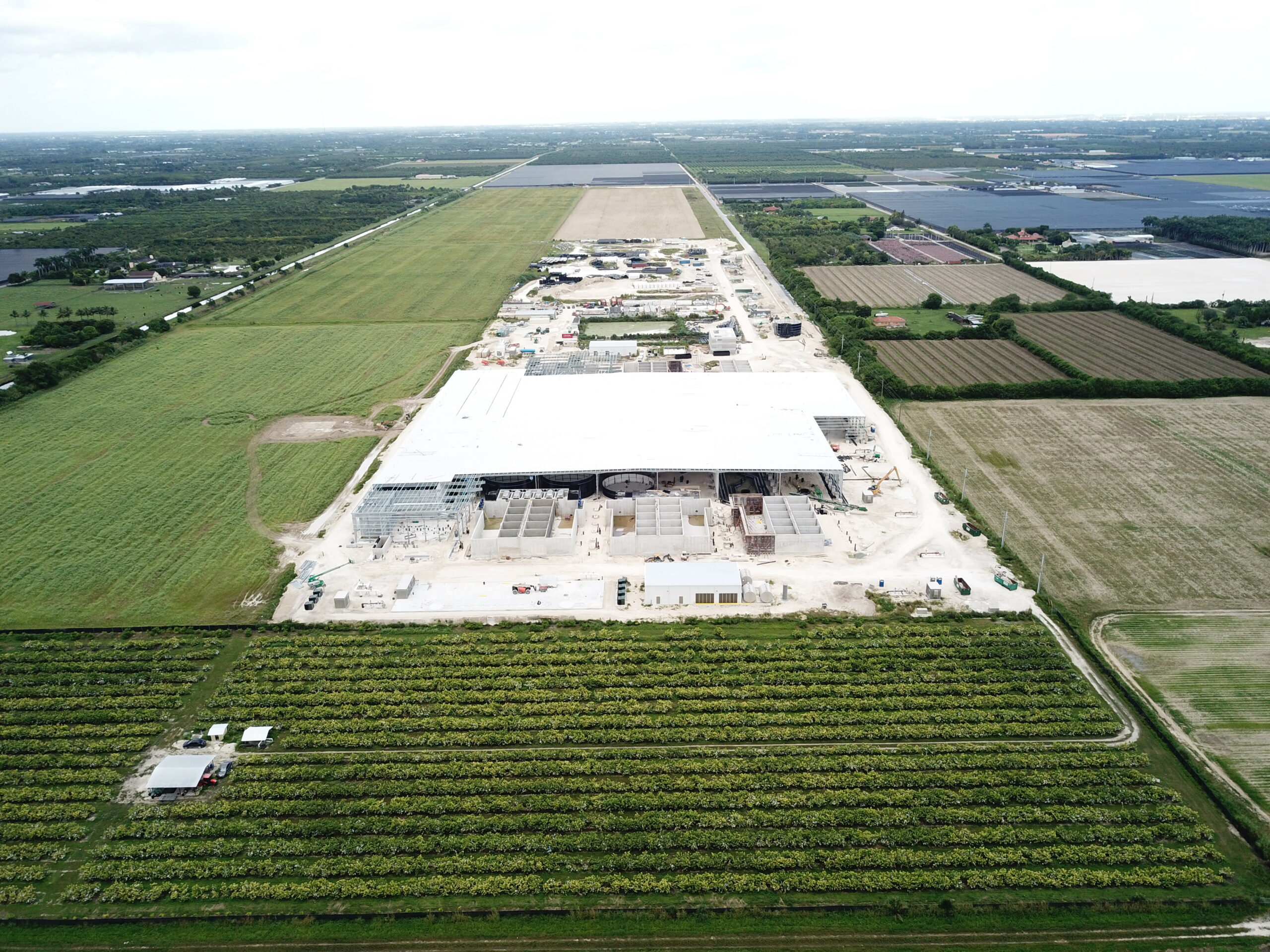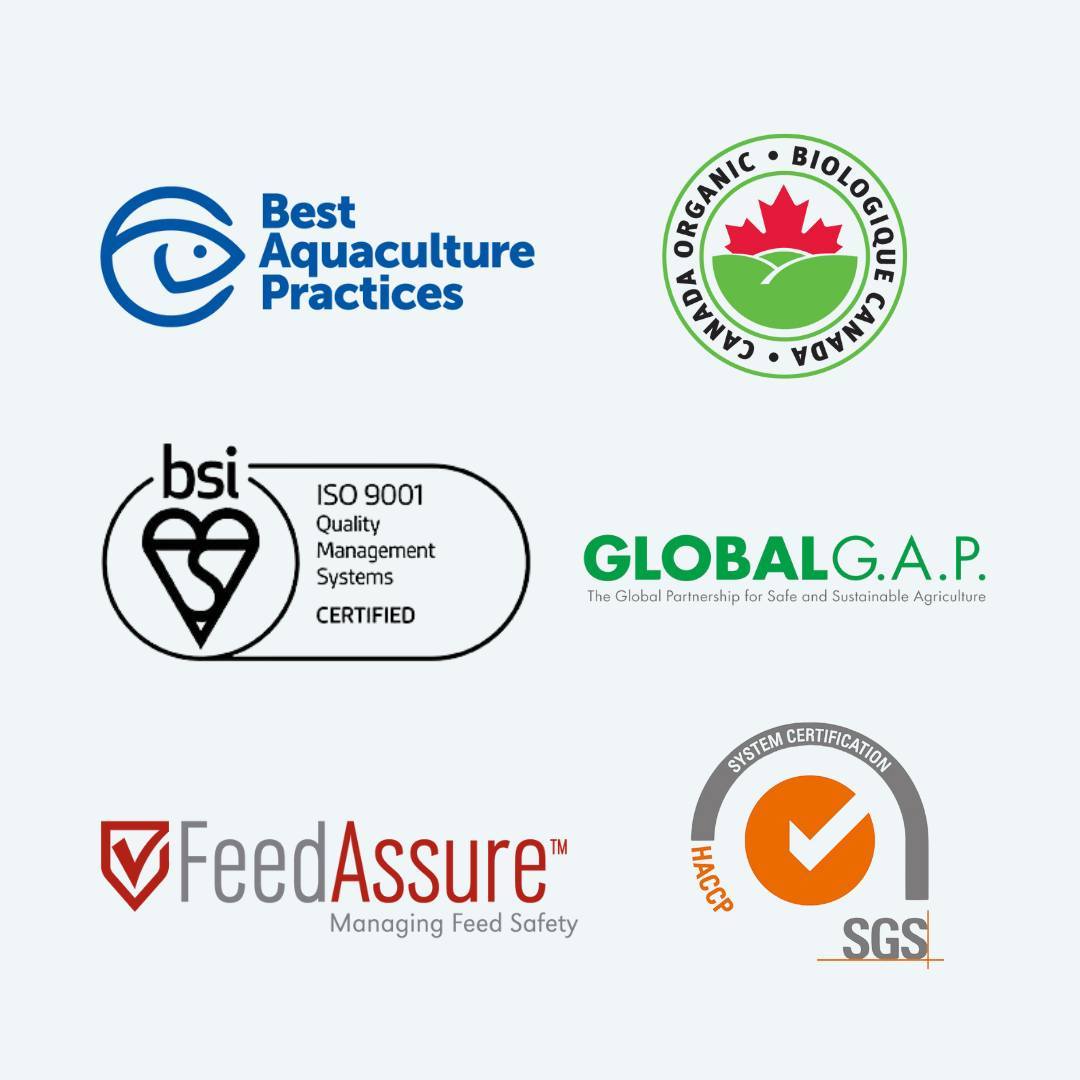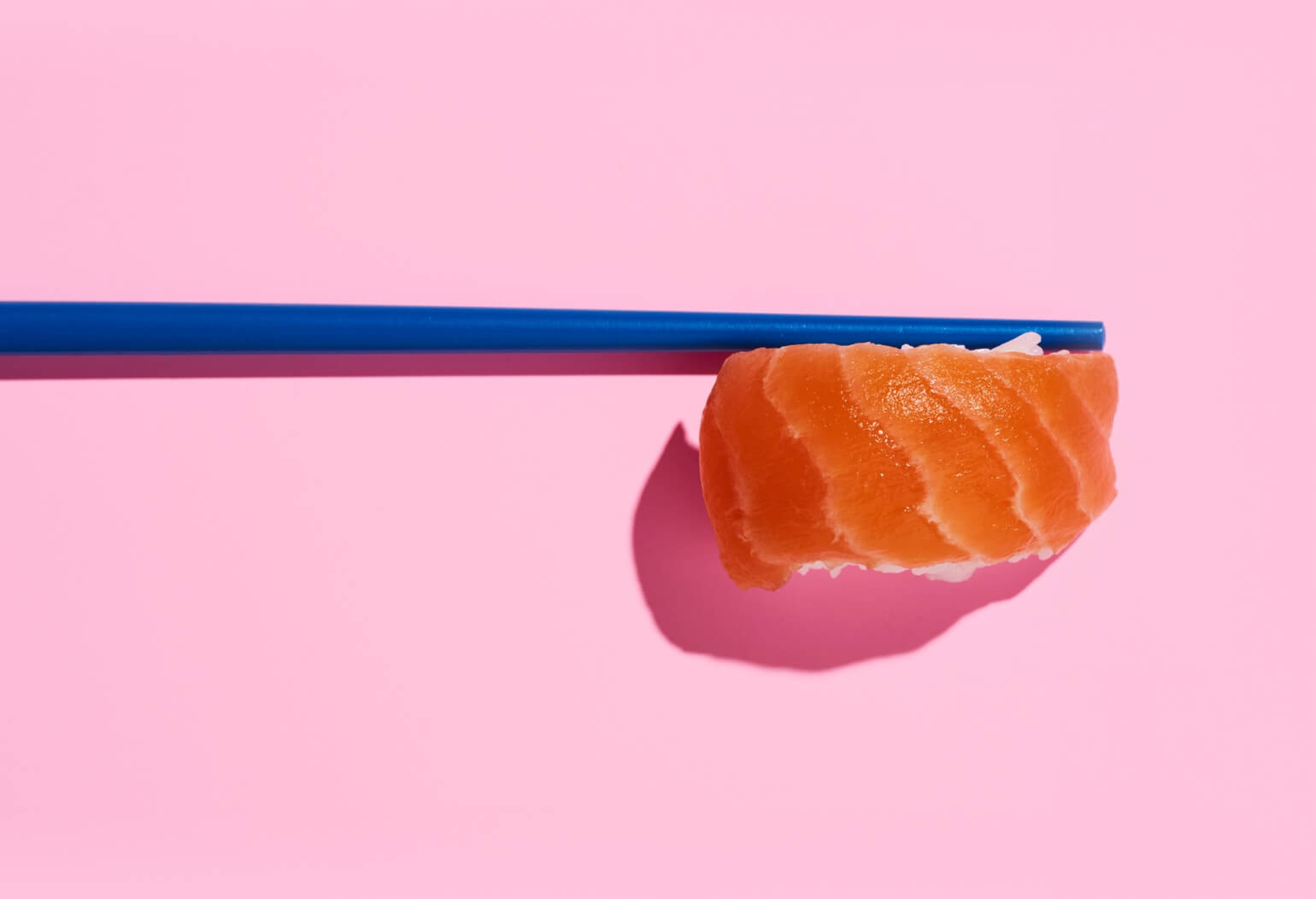Feeding the Future with Bluehouse Salmon
We’re revolutionizing the seafood industry by raising Atlantic Salmon, on land, in Florida! As demand for seafood protein continues to rise, our oceans can’t sustainably keep up with the pressure of overfishing. Ocean-based fish farming offers answers, but some can still pressure our oceans due to the use of antibiotics, parasites, and potential escapees into wild waters. We invented our Bluehouse with the goal of solving these problems head-on by raising fish away from the ocean, in optimal conditions for animal health and welfare.
Each one of the steps involved in this process is science-backed and it all starts with the ingredients we feed our salmon.
There’s an important distinction to be made between wild and Bluehouse-raised Atlantic salmon. In the wild, young salmon start their days in freshwater receiving their nutrition from small aquatic insects like black flies, stoneflies, and caddisflies. (Markle, 1989)
As they mature and transition to the ocean, they consume a variety of prey including squid, polychaete worms, and herring. (Fisheries, 2023)
With Bluehouse Salmon’s innovative aquaculture solutions, it’s our job to protect our wild fish populations from extinction, by ensuring that our land-raised salmon are getting the same, quality nutrition in our Bluehouse.

What our Bluehouse Eat
We’ve worked with our feed partner, Skretting, to develop a fish feed that provides the same nutritional components to salmon but doesn’t contribute to the stress of overfishing. Our Bluehouse Salmon’s diet is quite varied, receiving nutrition in the form of protein, fat, carbohydrates, vitamins, minerals, and antioxidant carotenoids for color.

Certified Feed
Our focus on environmental sustainability is reflected in our choice of raw materials, their origins, harvesting methods, and the regulations governing our supply chain. We are proud to work with our feed partners, who help us maintain high levels of transparency and accountability throughout our supply chain.
“At Skretting, we ensure that only the highest quality, safe, healthy and sustainable ingredients are used in the production of our fish feeds. This is achieved through our rigorous global certifications and standardized procedures for assessing and managing all ingredients and suppliers.”
– Trevor Stanley, Managing Director, Skretting North America

Looking to the Future
We’ve created a salmon diet that mirrors the natural nutritional needs of wild salmon. Instead of traditional fish and fish oil, we’ve incorporated alternative ingredients such as algae oil and land animal proteins. We’re also exploring innovative options like black fly larvae and single-cell proteins.
Our approach has allowed us to foster ocean health and continue to reduce the quantities of marine ingredients in our feed. We’re proud to say that we’re a net marine protein producer, meaning we use fewer resources extracted from the ocean compared to the amount of salmon we produce. This ensures that our fish remain healthy and happy while we maintain our commitment to sustainability. But we’re not stopping there. Our goal is to further reduce marine ingredients in our feed, safeguarding wild seafood populations and contributing to a healthier ocean for current and future generations.
Experts on our Bluehouse Salmon’s Feed
Still curious about the distinction between wild and Bluehouse Atlantic salmon?
Listen to McKenzie Margarethe, a Marine scientist with a digital platform focused on realistic conservation and ocean education speak on this topic.
View this post on Instagram
Even more curious? Check out World Record Professional Spearfisherwoman and ambassador for ocean sustainability worldwide Valentine Thomas’ explain the difference between wild Atlantic Salmon and Bluehouse Salmon’s diets.
View this post on Instagram
